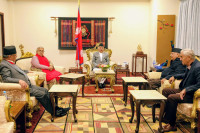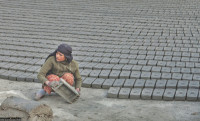Opinion
Preferential treatment
This is what Nepal needs to do to gain from the recently announced US preferences
Bijendra Man Shakya
The US has announced preferential access for another 27 products from the least developed countries (LDCs) including Nepal. In addition, Nepal has received the same facility for 66 products under the special Nepal Trade Preferences Act (NTPA) which was passed by the US Congress last year. This means Nepal can export 93 products to the US duty-free. They include handbags, carpets, pashmina items, hats and headbands, in addition to about 4,800 goods already covered by the US generalised system of preferences (GSP) programme for all LDCs. These developments have a special bearing on Nepal’s export promotion drive in the context of its unsuccessful lobbying for US preferential treatment for Nepali apparels.
For an LDC like Nepal, the significance of preferential access to international markets cannot be underestimated. Virtually all Nepali exports depend on duty-free market access in the industrialised countries, particularly under the GSP programme launched under the aegis of the United Nations Conference on Trade and Development (UNCTAD) more than 40 years ago. The US is one of most important preference-giving countries for Nepal due to its dependence on American market for export trade and an increased rate of preference utilisation.
Higher tariff advantage
The US is the second largest important trade partner for Nepal. It is a vital export destination for all major products including carpets, clothing, pashmina products and jewellery. The US offers huge prospects for every Nepali product, and more importantly, Nepal has the highest preference utilisation rate in the US of around 85 percent. This means that 85 percent of the exports covered by the US preference scheme entered America duty-free. This is far higher than in the European Union (EU) which is the next important export market for Nepal. Yet the preference coverage, defined as the ratio between exports covered by US preferences and total exports from
Nepal and subjected to duty in the US, is still low. This is because US preferences did not cover some major Nepali products with comparatively higher export values such as clothes, selected pashmina goods and some categories of carpets.
Against this backdrop, the recently announced US duty-free programme will not only raise the preference coverage for Nepal, but also see a substantial growth in preference utilisation and boost exports to the US. Two things are important in this regard. One, US tariffs for most products covered by the extended duty-free status, particularly carpets and pashmina goods, are relatively high, offering higher preference margins for Nepal. While the US tariff on carpets is as high as 7 percent, it is 11 percent on pashmina shawls, scarves and mufflers. The tariff on other products such as bags, hats and headbands ranges from 5-20 percent. A higher preference margin means a higher tariff advantage for Nepal. Two, a higher preference margin gives a higher competitive edge to the beneficiary country in comparison to countries without such preferences.
Therefore, other things being equal, American importers will likely divert product sourcing to Nepal because it will be cheaper. American buyers will thus benefit from the duty advantage. At the same time, improved price competitiveness means Nepali exporters will receive more orders provided demand is sensitive to price changes among US buyers. This is how the duty-free status can possibly ensure enhanced exports to the US and boost Nepal’s overall trade performance.
However, preferential treatment schemes are not without flaws. Usually, products under preferences have to meet stringent rules of origin and administrative requirements of the preference-giving country. Although the paperwork is intended to prevent trade deflection and transhipment of products under preferences from non-beneficiary to beneficiary countries, it has hit the preference utilisation capacity of many LDCs, and they sometimes forego the facilities.
So Nepali exporters will have to work hard to enjoy the benefits of the US duty-free provision.
Another important aspect is the possibility of preference erosion. Nepal will possibly lose exclusive privileges for some products, specifically luggage and handbags, due to overlaps between the NTPA programme and the extended US duty-free status for all LDCs. The advantages for Nepal are the same as for other LDCs if compared to non-LDC beneficiaries. Nepal can still benefit the most by concentrating on products such as carpets and pashmina products which have been given special benefits under the NTPA and witnessed increased exports to the US despite high tariffs.
Energising exports
However, Nepal cannot realise the potential benefits without overcoming problems related to supply capacity and delivery efficiency in order to establish good product positioning among US importers. The government’s role as a facilitator is indispensable for not only improving the supply capacity but also for developing a vertical production linkage to simplify the complex preferential rules of origin for Nepali exporters. And the private sector, instead
of pleading for the same facility for textiles and clothing, should move collectively to harness all possible benefits of the new provisions.
This is important for two reasons. While the chances of getting preferential treatment for clothing are very slim in the US as it is considered to be ineligible for the GSP, Nepal should work to energise exports of products like carpets and pashmina items which are showing promising signs. Also, it should diversify and add new products such as luggage, handbags and headgear which offer new opportunities. It cannot afford to waste any time to exploit the benefits as preference erosion is inevitable since more and more LDCs are vying for the same facility, and the US may unilaterally reduce tariffs on such products for all when a multilateral initiative for trade liberalisation is implemented.
Shakya is an Associate Professor of Economics at Tribhuvan University and specialises in economic and trade interests of Nepal and the LDCs




 15.12°C Kathmandu
15.12°C Kathmandu










